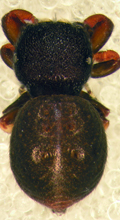Latest News Archive
Please select Category, Year, and then Month to display items
16 March 2021
|
Story Lacea Loader
![]()
All academic activities have been suspended on all UFS campuses from 17 to 22 March 2021. No online/face-to-face lectures/tests/assignments will take place until 23 March 2021, and the full academic programme will resume on this date.
This decision will allow the university management an opportunity to address outstanding matters regarding the admission of senior undergraduate students.
Administrative activities will continue during this time and the campuses are not closed. The university management is aware that sporadic disruptions of activities by small groups are still taking place on the Bloemfontein Campus.
Protection Services, with the assistance of private security, remains on high alert and is closely monitoring the situation on the campuses. The necessary safety and security plan, as well as contingency plans, are in place.
Please monitor the university’s communication platforms for updates on any developments.
It is important to ensure that your cellphone number is updated in order to receive communication via the KovsieApp and SMS.
Released by:
Lacea Loader (Director: Communication and Marketing)
Telephone: +27 51 401 2584 | +27 83 645 2454
Email: news@ufs.ac.za | loaderl@ufs.ac.za
Fax: +27 51 444 6393
UFS entomologists describe a new spider species
2014-02-19
|
 |
It is about 3mm in size and almost looks like a ladybird, but this new spider is the cause of great excitement at the University of the Free State’s (UFS’s) Department of Zoology and Entomology.
The new species of spider, now known as Rhene amanzi, was recently described for the first time and was ‘introduced’ to other arachnologist at the recent congress of the African Arachnology Society at Amanzi Private Reserve.
Dr Charles Haddad, senior lecturer in the UFS’s Department of Zoology and Entomology, said they already stumbled upon the male spider in 2010 when a student was doing research at the reserve. After a very long process, the spider was described and a couple of weeks ago, whilst at the congress, they also found the female.
“Up to now we only know that the spider lives in trees in the Brandfort area. The range could be wider, but since it was only described recently, other arachnologists will only now be able to identify accurately.”
Dr Haddad says they still have to determine how many eggs the female is able to lay, what the spider’s life cycle looks like and what their habitual preferences are.
“What we do know is that it probably isn’t poisonous and that the spider imitates a ladybird in order to protect itself against predators.”